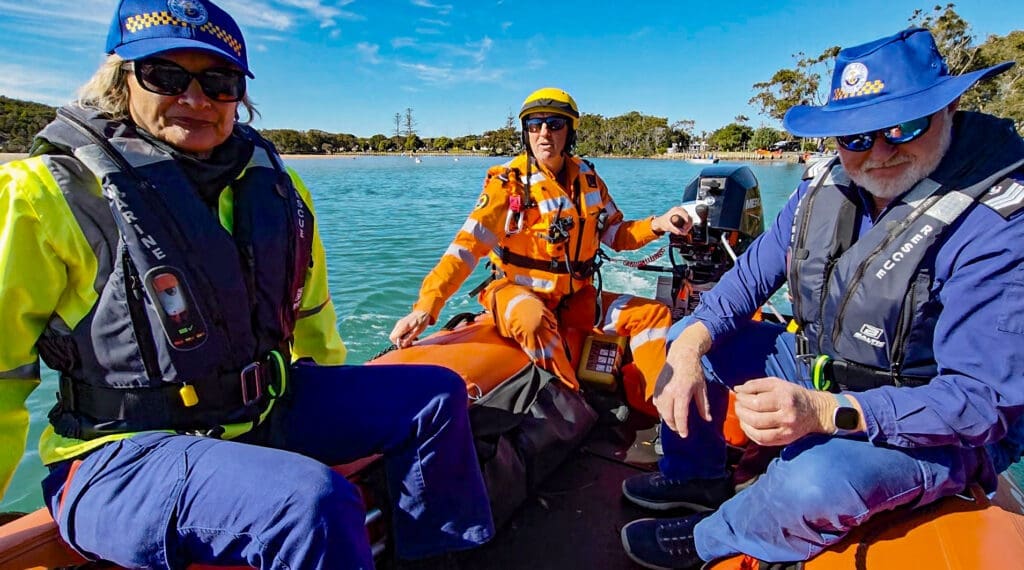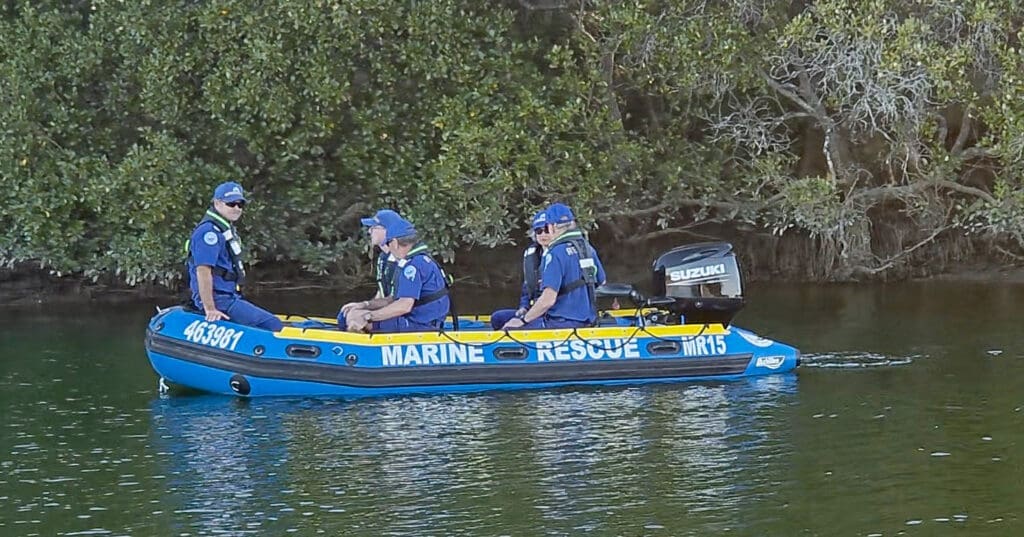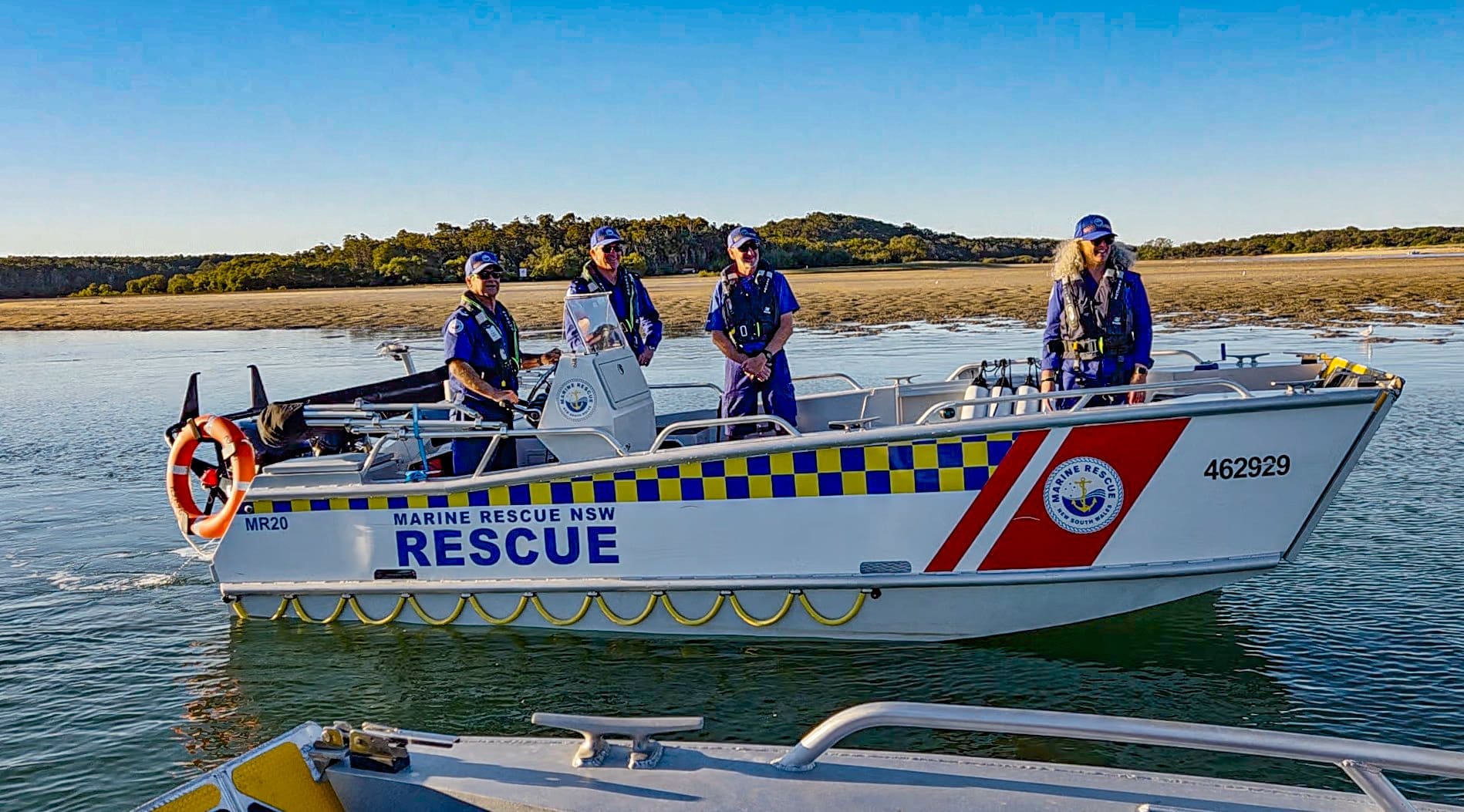When the catastrophic 2022 floods hit northern NSW, Ballina’s most experienced boaties were told to stand down.
Marine Rescue Ballina skipper Geoff Hutchinson still remembers the frustration.
“We were blue water trained, not brown water, so they wouldn’t let us help – even though we were used to navigating three-metre seas across the bar,” he said.
“But we couldn’t officially assist in the floodwaters. That’s all changed now.”
What often goes unrecognised is that Ballina’s Marine Rescue volunteers did contribute during the 2022 emergency – not by launching their boats, but by delivering fuel trailers to support SES and police rescue boats working in and around Lismore.
“We couldn’t deploy, but we weren’t going to sit idle,” Hutchinson said.
“We took fuel to Evans Head, Ballina and Brunswick Heads – wherever the rescue teams needed it. It was our way of helping, even without the green light to launch our own vessels.”
Following a post-flood inquiry, the NSW Government invested $3.5 million to establish a Marine Rescue State Operations Group that is trained and equipped to support the SES during major flood events.

Now, Marine Rescue and SES crews train together regularly, building operational fluency and readiness for future emergencies.
This past weekend, four Ballina Marine Rescue volunteers; Captain Geoff Hutchinson, Captain Phil Causley, Frank Petech, and Paul Griffith all joined a major flood simulation exercise at Red Rock on the Corindi River.
They were part of an 18-member Marine Rescue NSW contingent from Point Danger, Woolgoolga, Coffs Harbour, Nambucca, Port Macquarie and Crowdy Head/Harrington, training alongside a dozen NSW SES members.
“We ran through realistic flood scenarios: evacuating injured people, navigating submerged terrain, and coordinating between agencies,” Hutchinson said.
“One task involved stretcher-carrying a spinal injury victim out of bushland, down a two-metre drop, and into a vessel, then coordinating the handoff to SES medics. That kind of joint work is critical.”
Five Marine Rescue vessels and five support vehicles were deployed during the simulation, which mimicked a severe weather event and kept participants in the dark about the scenario until the morning -a deliberate tactic to test real-time response.
“The training is hard but vital,” Hutchinson said.
“We’ve now passed the same swim and strength tests SES crews do.
“The two agencies are learning from each other. We have stronger water rescue training, they’re stronger on land, so it’s a great exchange.”
The newly established State Operations Group is designed to be mobile, with trained flood-response volunteers and specialised equipment able to be dispatched anywhere across NSW.

“We can now be deployed anywhere,” Hutchinson said.
“If there’s a flood out west along the Darling, or here again in Ballina, we’re in the system. It’s no longer just us trying to help from the sidelines.
“Now it’s official, it’s coordinated, and it’s resourced.”
And the passion for helping remains as strong as ever.
“We’ve always wanted to help,” Hutchinson said.
“Now we’re trained and we’re ready.
“So next time, we won’t be just helping on the sidelines.”



0 Comments